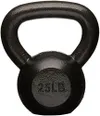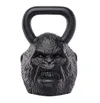
Hit your abs, obliques and deeper core muscles using five compound exercises that strengthen your torso without weights and rely solely on your body weight.
I recommend rolling out one of the best yoga mats with some cushioning for your hands and elbows, but otherwise, you don’t need any equipment for these bodyweight exercises. And if you’re unsure what compound exercises are, you’ll target several muscle groups simultaneously.
As a personal trainer who primarily works outside, I’ve been getting creative with programming exercises that build stronger muscles and target the core without relying on weighted barbells, dumbbells, or kettlebells.
Here are five stellar compound exercises that could improve your relative strength (the ability to work with your body weight) and sculpt a stronger core.
Can you build abs with compound exercises?

In short, just because you hammer out the best ab exercises in the gym or lift heavy weights, doesn’t mean your abs will pop. Building and defining core muscles and strengthening them aren’t mutually exclusive, which is why hypertrophy and strength training techniques differ in offering your body benefits.
Like making a delicious dinner, it takes a mix of ingredients, brought together in harmony, and measured correctly, to create success. In this case, you’ll need a consistent exercise routine and to adapt your program every few weeks (depending on your training regime, this is known as progressive overload) to keep challenging muscles.
Alongside that, your diet and sleep also matter. If you still can’t see your abs yet despite working out, looking at and adjusting factors like diet and lifestyle could help you understand why. But compound exercises that target multiple muscle groups while heavily recruiting the core are a ticket to success in the gym.
Sign up to get the BEST of Tom's Guide direct to your inbox.
Get instant access to breaking news, the hottest reviews, great deals and helpful tips.
What are the 5 compound core exercises?
Add these exercises to your next bodyweight routine.
Starburst plank

Planks target the whole body, strengthening your core, hips, glutes, legs, arms, shoulders and back. Starburst planks switch on your obliques using a gentle torso-twisting motion.
Perform a standard plank, ensuring your wrists are stacked directly under your shoulders. Brace your stomach, then step your right leg beneath your body to the left side of your mat. Hold, or lift your left arm to the ceiling, creating a straight line with your arms. Send your gaze toward your raised hand and keep your chest facing to the left side of the room. Return to the starting position and switch sides.
X plank

Learning how to do X planks properly could build stronger shoulders and core muscles and develop posture. The stationary exercise targets the transverse abdominis, abs, obliques, glutes, lats, traps, rhomboids, arms, chest, quads and hamstrings, and most people notice the plank variation in the lower abs, inner thighs and outer glutes.
Start in a standard plank position, then slowly walk your hands and feet wide without bending your knees or elbows. Keep your bum aligned with your shoulders without dropping your hips, and focus on squeezing your stomach and glutes.
Walk your hands and feet as far as you can, staying on the balls of your feet and pressing your hands downward. You can add movement to the X plank by walking your hands and feet out and back for repetitions.
Bear crawl

Not long ago, I committed to 7-minute bear crawls every day for one week, and while it’s not an out-and-out core exercise, it’ll challenge your ab strength. The crawl also targets the anterior deltoids (the fronts of your shoulders), chest, hip flexors, quads, glutes, hamstrings and core.
The bodyweight exercise also improves balance and coordination and research has even shown that this could improve explosive lower limb and trunk extension strength.
Start on your hands and knees, tuck your toes and lift your knees an inch off the floor. Keep your abs engaged and back flat, move your right hand and left foot forward, then repeat with the opposite hand and foot, making your way across the ground. Practice moving forward, backward and side to side without lifting your hips or knees.
Boat hold


Boat poses often crop up during yoga routines as a stabilizer and balance exercise. The isometric (non-moving) drill recruits the whole body, including the abs, lower back, obliques, hip flexors, adductors, upper back and arms.
Sit on your mat with your knees bent and feet pressed into the mat. Slightly lean back and brace your stomach, keeping your spine tall and neutral. Lift your chest to lengthen your spine and pull your shoulders down. Extend your arms alongside your legs, then lift your feet from the mat. If you can, extend your legs and hold the position.
Push-up rotations (windmill planks)
Push-ups are a popular upper body exercise known for strengthening the shoulders, triceps and pecs, recruiting the core muscles for stability. Adding rotation targets the oblique muscles and hips while maintaining a low impact on the joints.
Start by using the video above to practice the arm rotations while holding a plank position; this is called a windmill plank. From here, perform a standard push-up, then as you push upward, rotate one arm toward the ceiling and send your gaze to your fingertips as you twist to the side. Return to the starting position, then repeat on the other side, adding a push-up each time.
What are the benefits of bodyweight exercises?
Bodyweight exercises form the focus of calisthenics workouts — a type of bodyweight training that encompasses anything from gymnastics to the humble push-up or plank.
That’s because working with your body weight helps develop mobility and flexibility and improve your functional fitness, which includes your ability to perform daily tasks better and move more efficiently. I firmly believe that everyone (who can) should be able to push, pull, row and squat their body weight with the correct mechanics before loading weights in the gym.
It’s also a common misconception that you can’t build meaningful strength using your body weight. However, if your goal is to work on maximal strength (the maximum amount of weight you can lift during an exercise), you’ll need to add load as this can’t be achieved using body weight alone.
More from Tom's Guide
- 7 best kettlebell exercises for strengthening your core muscles
- 5 best dumbbell ab exercises you can try
- How much protein do you need to build muscle?

Sam Hopes is a level 3 qualified trainer, level 2 reiki practitioner and senior fitness writer at Tom's Guide. She is also currently undertaking her Yoga For Athletes training course. Sam has written for various fitness brands and websites over the years and has experience across brands at Future such as Live Science, Fit&Well, Coach, and T3.
Having worked with fitness studios like F45 and Virgin Active, Sam now primarily teaches outdoor bootcamps, bodyweight, calisthenics and kettlebells. She also coaches mobility and stretching-focused classes several times a week and believes that true strength comes from a holistic approach to training your body.
Sam has completed two mixed doubles Hyrox competitions in London and the Netherlands and finished her first doubles attempt in 1:11.









